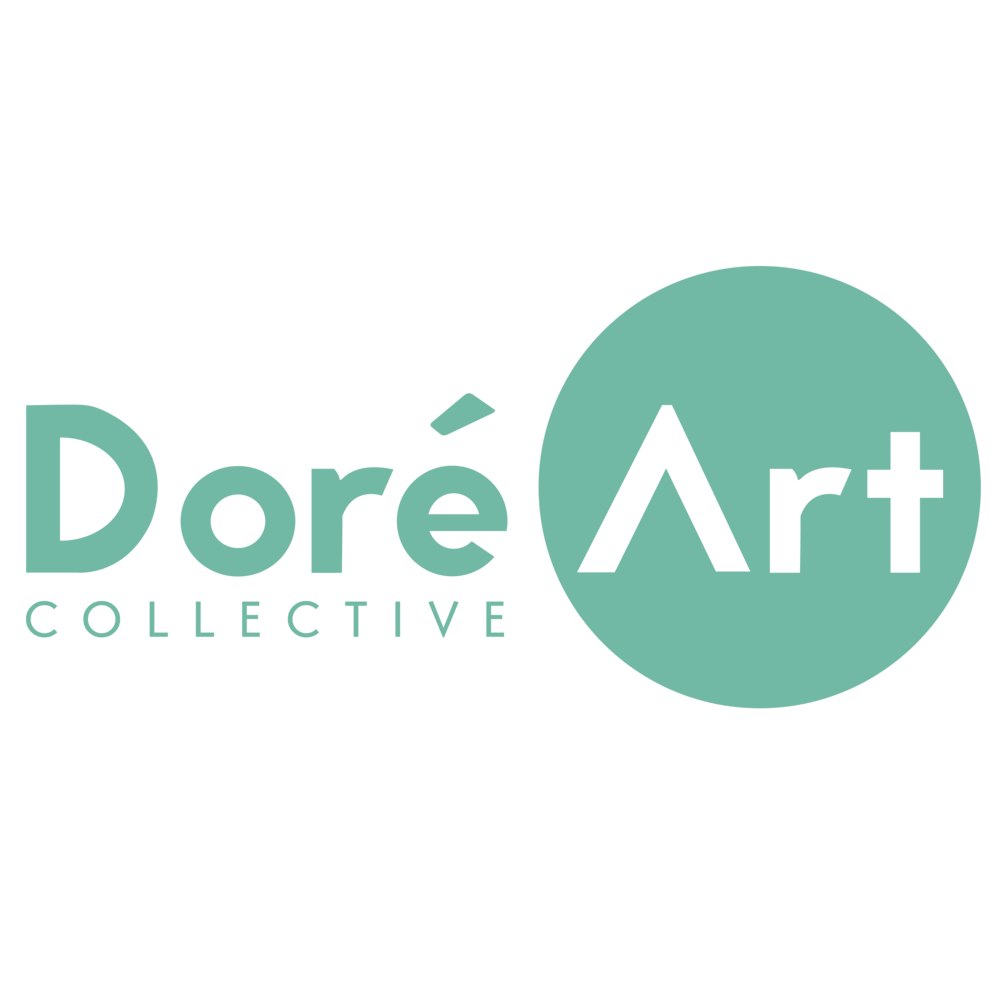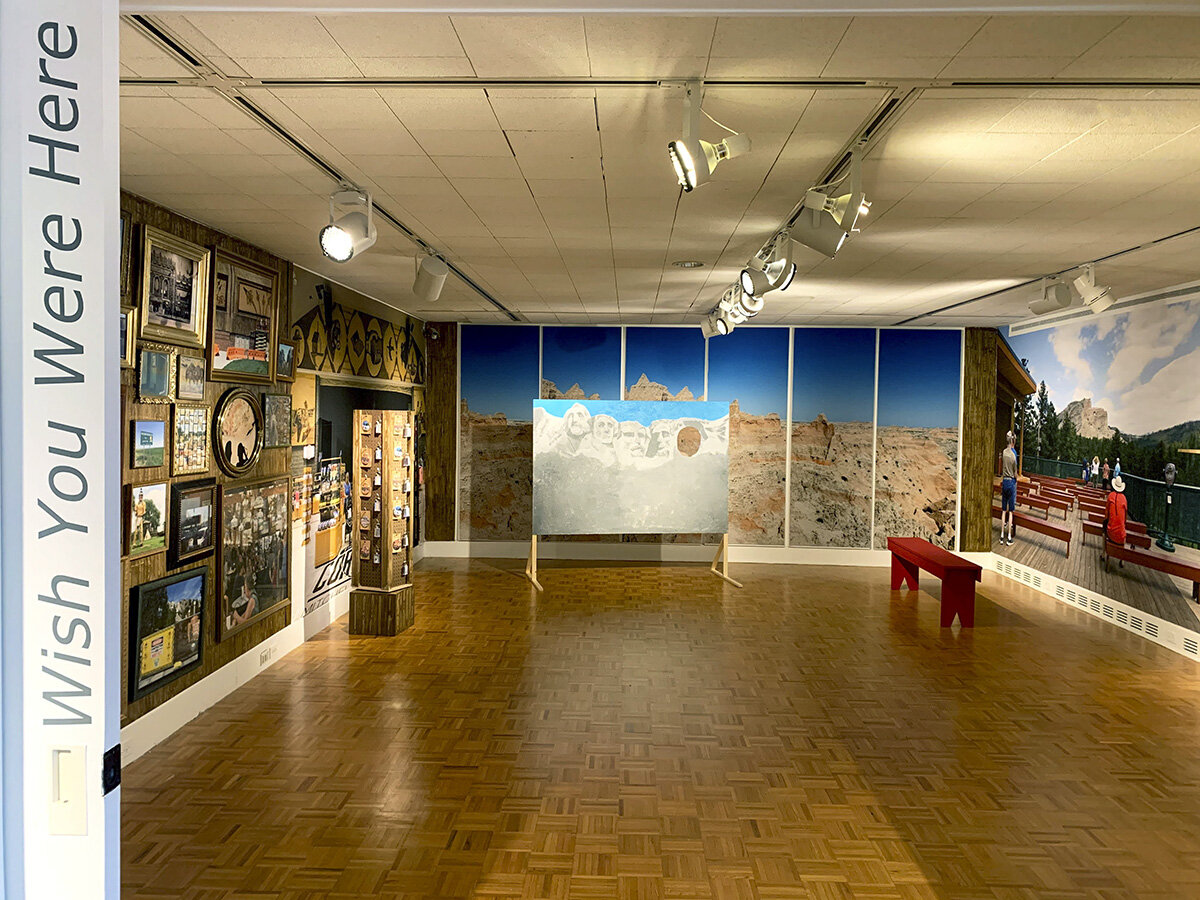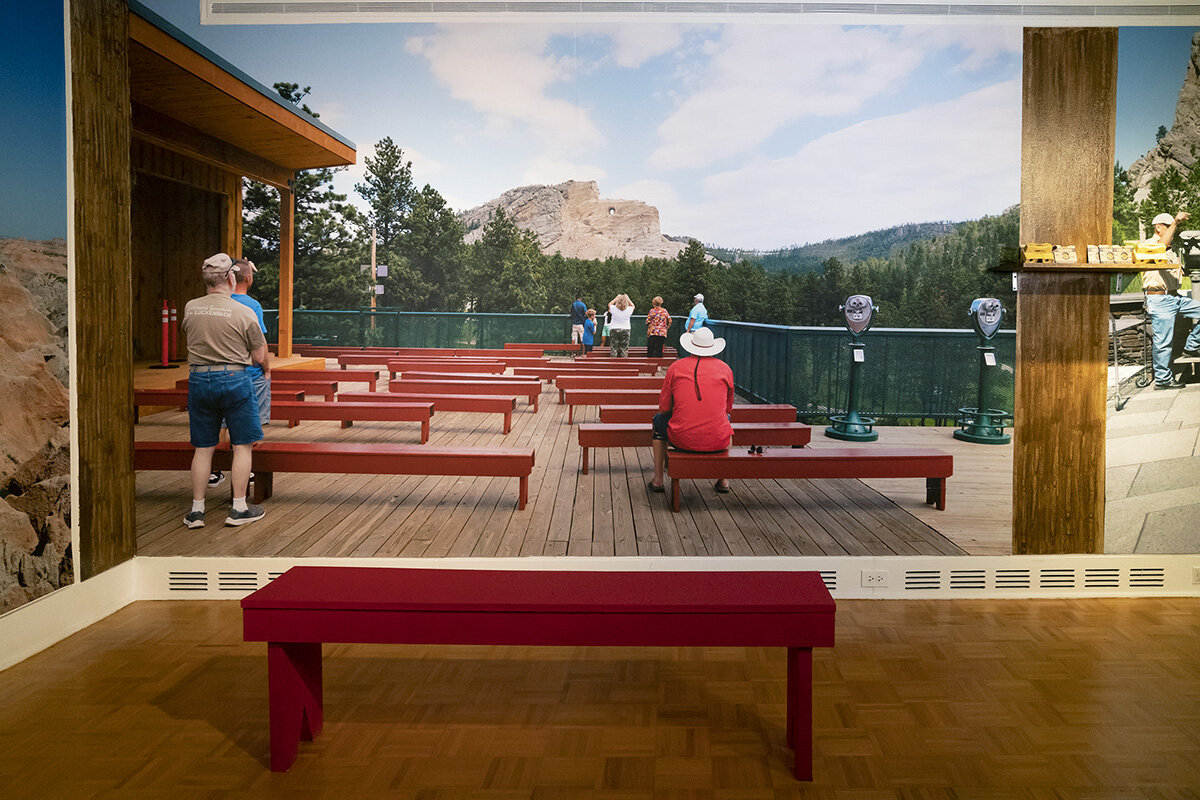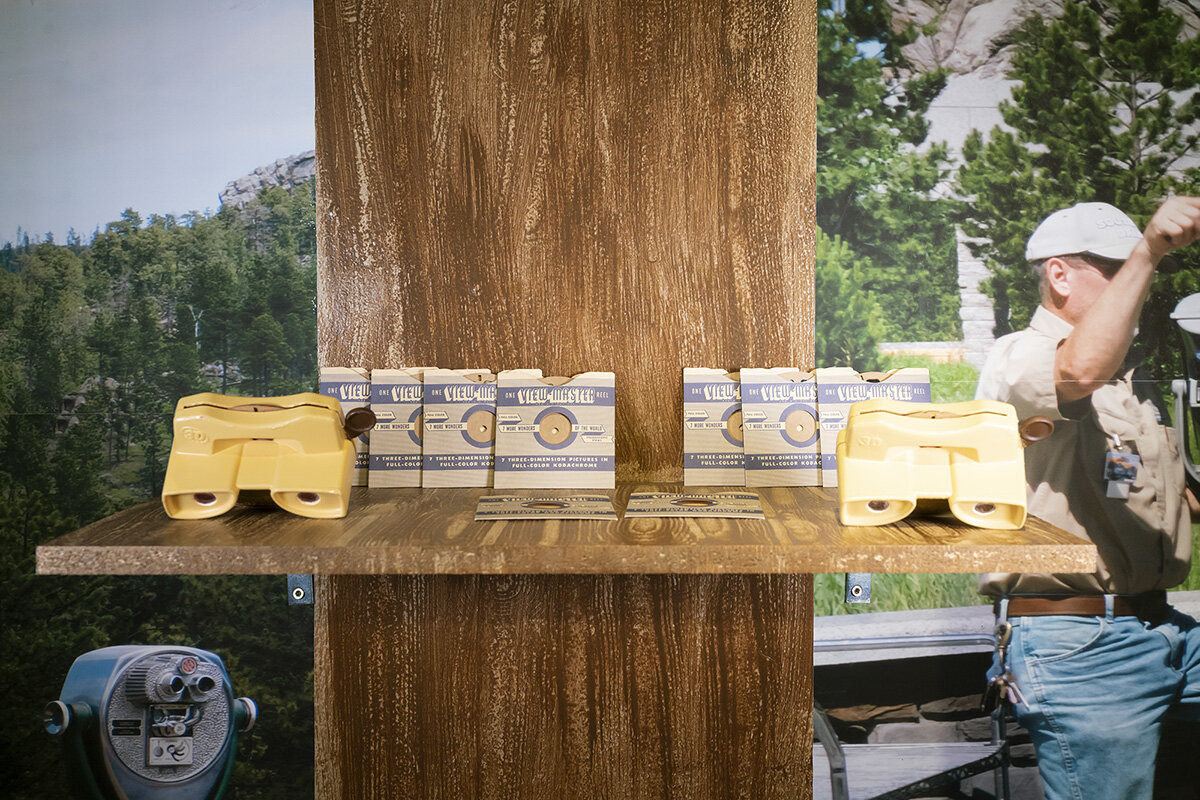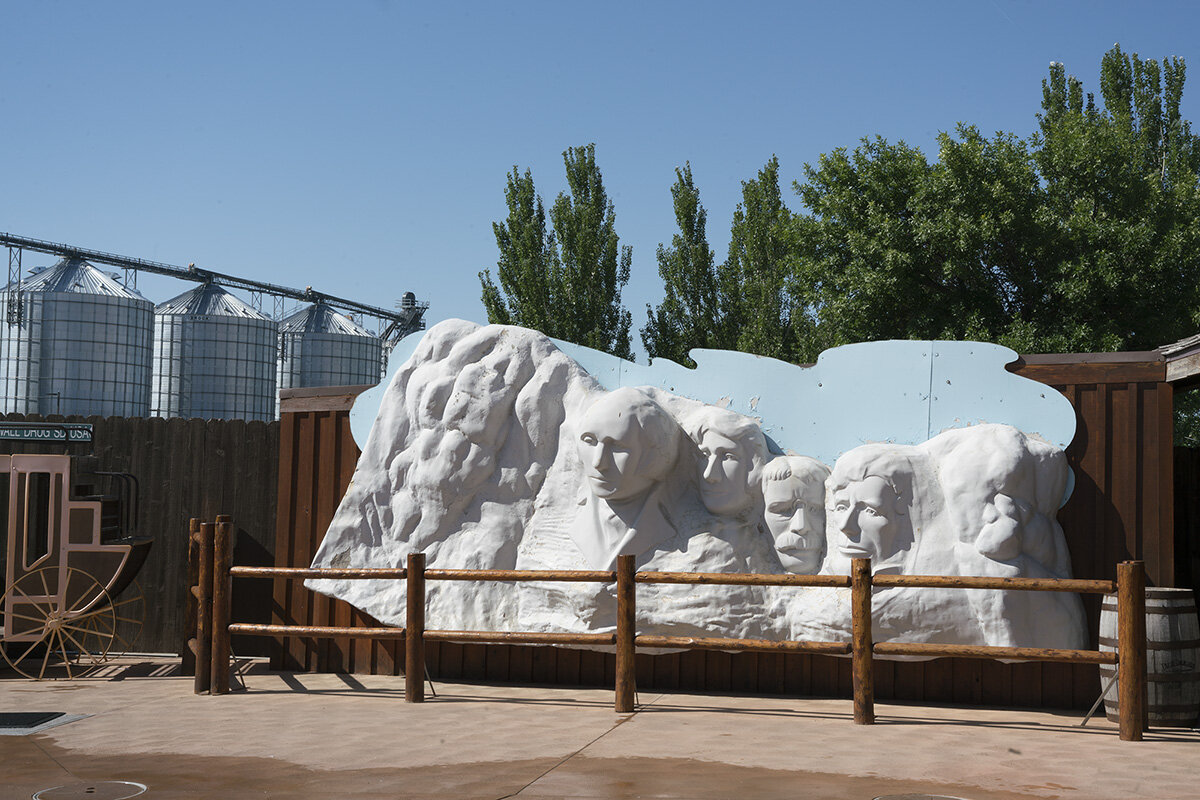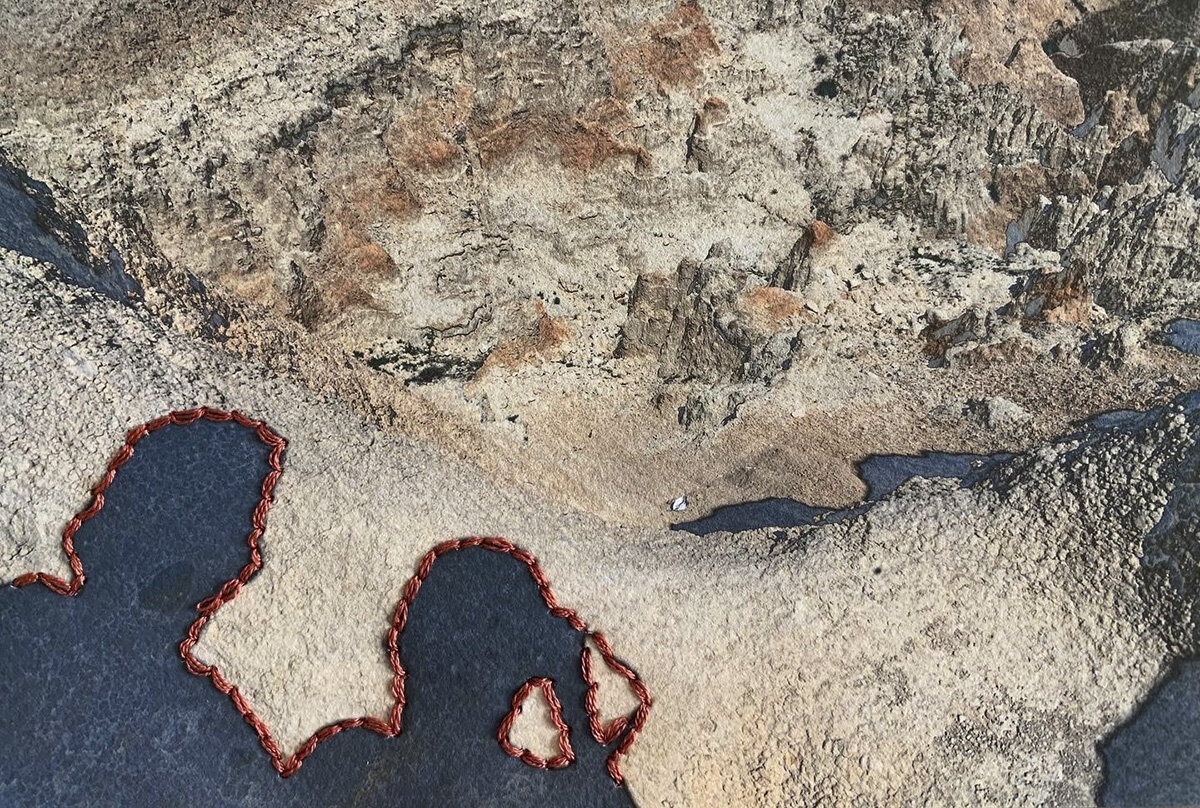Epiphany Knedler
Wish You Were Here
KP: What was the starting point for your body of work Wish You Were Here?
EK: Plans for Wish You Were Here began during my second year of graduate school. After focusing the first year and a half on a heavily socio-political community project, I decided it was time to switch gears. I had some trouble finding inspiration and went back to my roots. I realized most of my favorite moments of looking and seeing came from when my dad would take us on roadtrips around South Dakota when we were kids, since there wasn't a lot to do in our hometown. From there, I started to think more about the Midwest and what would bring people from outside to the area.
KP: Is this going to be an ongoing project?
EK: I hope so! My partner and I had a great time traveling. We are considering making trips with other region-specific attractions in the near future.
KP: In your recent installation at Wellington B. Gray Gallery, what is the significance of the variety of sizes you choose for display?
EK: With this exhibition, I wanted to play with the idea of what is real and artificial. Gift shops and museums at these roadside attractions often recreate a moment of history or story with their displays. I wanted to recreate this sense with my images, where the viewer takes on the role of the tourist within the space. The large images are meant to be able to interact with, whether it is sitting on the bench viewing the Crazy Horse Memorial or taking a selfie at Mount Rushmore. The other images hung salon-style are representative of the Americana or kitsch style of the Midwest. These places are often filled with iconography of the Wild West and landscapes with more than there is space to fill the walls. The remaining images took up as much wall space as possible. The postcards were printed to postcard size, as they were actually sent in the mail. These images give all types of opportunities for interaction, from hand-held to full-body interaction.
